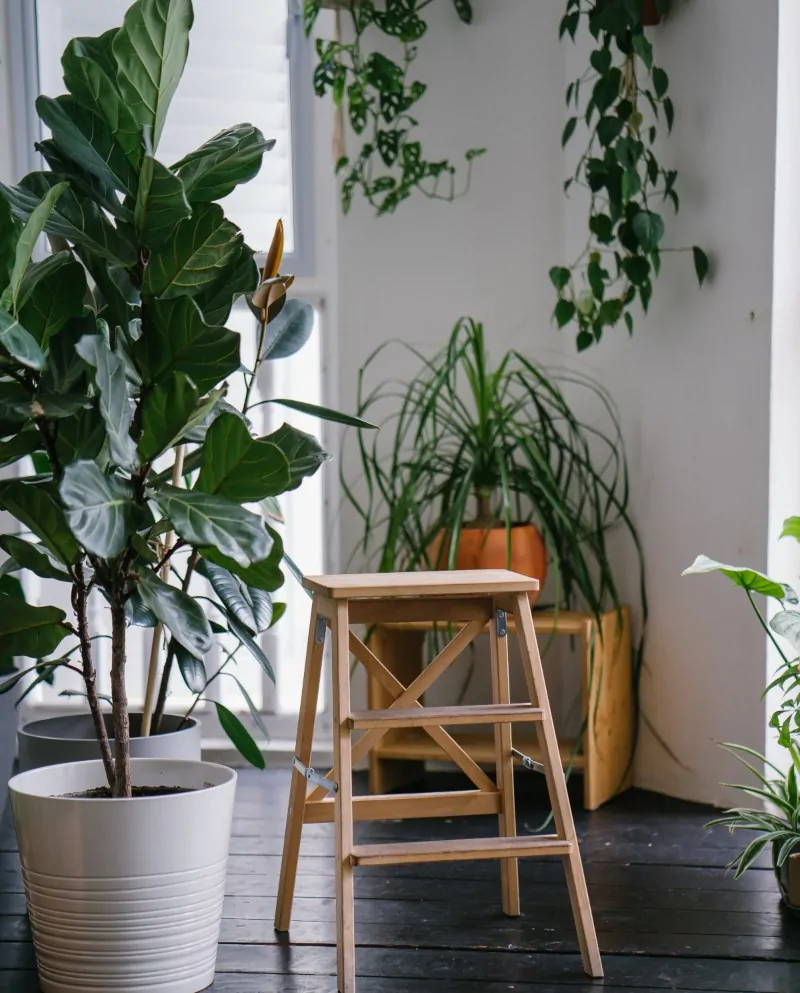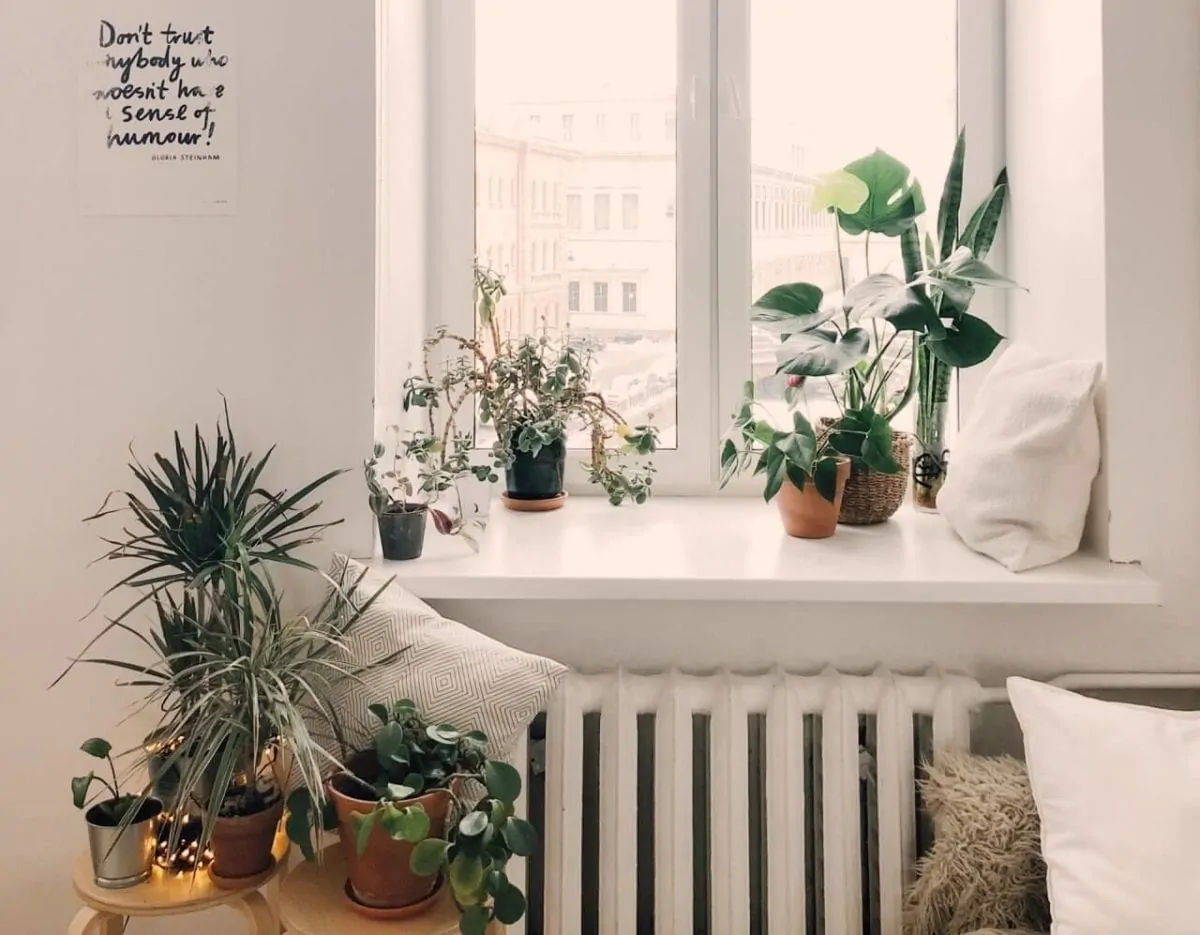


Finding the best plants for your bedroom is critical for a good night’s sleep and enhancing indoor aesthetics. After all, plants are all around. They create food for us, offer shade, provide us with beauty, and of course the oxygen we breathe.
Studies have shown that spending time out in nature also reduces stress levels, so why not have them in the bedroom with us?
Stress and insomnia seem to go hand in hand. It is also well known that there are chemicals in our mattresses, the dressers and tables, carpeting, and paint in the bedroom that get released into the air. You breathe all of that in while you sleep.
Clean air is a must to promote good sleep, these plants are easy to care for and I have included how each one is beneficial to your slumber. Using any or all of them should grace your sleep with both beauty and cleaner air.
One of the best plants for your bedroom is the Peace Lily – Spathiphyllum spp. This plant is perfect to start with; what better than one that has “peace” in its name, am I right? But seriously though, this NASA scientist superstar plant helps to filter out benzene, trichloroethylene, and formaldehyde gases and produces oxygen to boot.
Then, if that wasn’t enough for you, this plant gives off moisture that can boost a room’s humidity by up to 5%. Suppressing airborne microbes which cause allergies and rids you of that dry throat and nose that may keep you awake.
English Ivy – Hedera helix is a versatile houseplant that can be grown in hanging baskets. This is another one of those NASA scientist study air-cleaning plants. It proves pretty helpful for people with allergies who need to sleep. According to a study in California, an English Ivy plant reduced airborne particles of fecal matter by an average of more than 94 percent over 12 hours. The level of mold in the air went down by 78.5 percent.
The plant is poisonous to pets, so keep it high in the corner and cut relatively short. Some bright light and occasional misting of water this Ivy League star is wonderful in breaking up that drab corner of the ceiling.

Just like many other plants, they will help clean the air from harmful gasses and toxins, plus who doesn’t need a little extra prayer at night?
Areca Palm – Dypsis lutescens is a plant that is commonly found in big box stores and you usually see them in office buildings. They can get large, up to 10 feet, but are extremely slow-growing, so unless you have a tiny bedroom, this plant will be fine.
Once again, NASA paved the way for discovering this plant to be helpful in the bedroom, however, it was while another sinister phenomenon was occurring when they were studying them, that phenomenon was quickly linked to poor indoor air quality and became known as Sick Building Syndrome.
Since then, these palms have become a staple to helping people working in these buildings that suffered such things as allergies, asthma, headaches, and loss of concentration. Imagine the benefits of waking up with at least some relief from those issues?

Aloe produces oxygen at night and helps to keep your home free from benzene gasses, which can be found in paints and certain household cleaners. If that wasn’t enough reason to run out and buy a dozen of these plants, they have been reported to remove 90% of the formaldehyde in the air as well as other harmful microorganisms and even absorb dust in the air.
Provide as much bright light as you can or even a little dappled sunlight through the window and your aloe will be a happy camper.

In the way of light, it only needs bright diffused, never direct sunlight. The occasional drink of water, as it is very drought tolerant. It might need an occasional wiping off with a damp rag to remove any dust that builds up on the long slender leaves. Read our care guide for this plant.
As you can see, bedroom plants mean more than just decorations to your room. They are all easy to care for, don’t mind a little abuse, and they can get rid of harmful toxins and gasses in the air that could disrupt your sleep. There are many other choices out there, these are just ones that I trust, know and feel should be in everybody’s bedroom.
So what’s your favorite bedroom plant? Get chatty with us, one never stops learning!
You might also want to check some interesting articles about plants like 21 Best Shade Plants, 15 Most Common House Plants, and 8 Best Indoor Plants That Clean The Air.

Monthly updates on your favorite plants and how to keep them alive, delivered straight to your inbox!
Privacy Policy
This privacy policy outlines what info we gather from our visitors and contributors, the tools we use to collect, store, and protect it, and how we use this information.
Like any other website on the World Wide Web, YouHadMeAtGardening.com records some info about you and your device during your visit. This privacy policy outlines how our team gathers, stores, protects, and uses the information it gathers from visitors of the YouHadMeAtGardening.com website.
By continuing to use this website, you implicitly agree to this policy; if you do not agree to some or all of the procedures listed on this page, you can opt out at any time, however, you might not enjoy the intended browsing experience.
Our team reserves the right to alter this privacy policy with no prior notice to you. However, if the alterations made affect your personal data in any way, you will be notified immediately by email, on our homepage, or here.
Information YouHadMeAtGardening.com Collects
Our systems gather personally and non-personally identifiable information from visitors of the YouHadMeAtGardening.com website.
The only personally identifiable information we collect is your name and e-mail address only when leaving comments if you’re a visitor, or when submitting content and leaving comments, if you’re a contributor.
However, if you are not comfortable with providing your personally identifiable information to us, you can also use an alias instead of your real name and e-mail address without breaking any rules or regulations currently in use.
Note: If you submitted a comment using your personally-identifiable information and want it removed, you can always contact us and we will remove your info in 30 days.
The non-personally identifiable information we collect is your IP address, ISP information, device and browser info, and your browsing patterns – specifically the pages and websites you visit. This information cannot be used to track down your identity.
How We Collect Your Information
We use the following tools to gather personally and non-personally identifiable information from visitors and contributors:
• Cookies: these tiny text documents contain unique identifiers that are stored in your computer after your expressed consent. Cookies collect non-personally-identifiable information about your browsing patterns, which helps us pinpoint the areas of our website that require extra work and the areas that fully meet your needs.
• Log files: These tools record browser and device information, browsing patterns, websites that referred you to the YouHadMeAtGardening.com website, pages our website referred you to, and other types of non-personally identifiable information.
• Sign-up forms: these requests only come up when registering for our newsletter and is the only way our team collects personally-identifiable information from visitors.
How We Protect Your Information
All information we gather, both personally and non-personally identifiable, is stored in systems and databases managed only by the YouHadMeAtGardening.com team. We use the latest security measures to make sure the information you provide and the information we gather stays confidential, such as encryption, user behavior monitoring, and a series of managerial procedures.
How We Use Your Information
We only use your personally and non-personally identifiable information to improve the quality of the website and your browsing experience while here. We want to know which pages and sections of our website satisfy your needs and are of real value to you and which ones need improvement so we can make the proper adjustments. We also use your information to make sure the website is properly displayed on your device and browser.
If you choose to opt in for our newsletter, we will also use your information to keep in touch.
However, know that the YouHadMeAtGardening.com team will never share your information with other parties in exchange for financial rewards or any other kind of benefits. Some third parties might get very limited access to your info, but only to your non-personally identifiable information and only as we described above.
The personally identifiable information you provide is strictly confidential, therefore we will not share it with anyone.
Advertising
This Site is affiliated with CMI Marketing, Inc., d/b/a CafeMedia (“CafeMedia”) for the purposes of placing advertising on the Site, and CafeMedia will collect and use certain data for advertising purposes. To learn more about CafeMedia’s data usage, click here: www.cafemedia.com/publisher-advertising-privacy-policy
